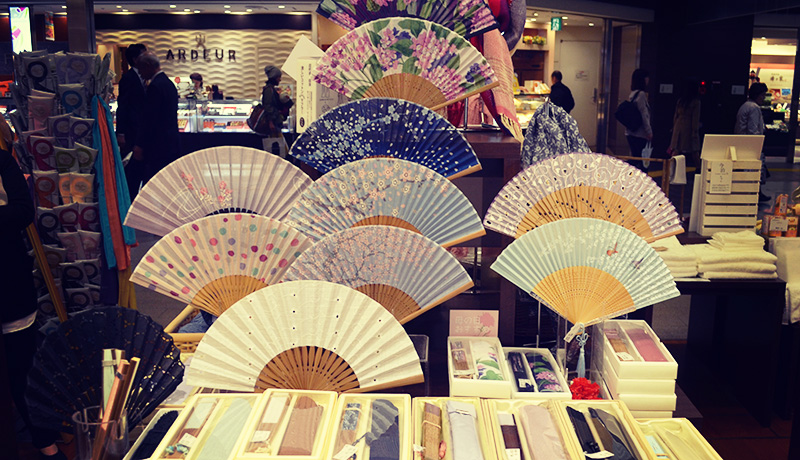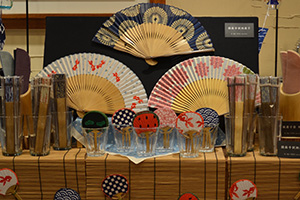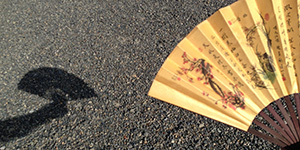

We’re All Fans Of These Folding Beauties
Photo Courtesy of Terry Elward
If you think Japanese fans are just for keeping cool in the summer months, you’d be sorely mistaken. From pieces of art to dancer props and weapons, the Japanese fan is a uniquely tangible piece of local culture.
What you should know
The most iconic fans are the folding sensu variety on a pivoted wooden frame. This is one of the first Japanese inventions to receive worldwide fame, reaching international popularity by the 16th century.
A must-have accessory for men and women around the country right now, the fans are covered in summer scenes such as fireworks, blossoms, goldfish or dragonflies. If you’re ever given one as a gift, never take the gesture lightly; fans are symbols of respect and friendship in Japan.

More Fan Options, Photo Courtesy of Terry Elward
The sensu fan has many incarnations. One particularly fascinating example is the tessen. These iron folding fans were used by samurai warriors in combat — closed they were used as a club; open they were paddles for swimming and shields.
Decorative fans that are displayed in homes or offices are known as kamari-sen. These beautiful pieces are made of gold-leafed paper or painted with Japanese calligraphy.
Ceremonial fans are larger and not often seen in shops as they are exchanged at wedding ceremonies.
Mourning fans are plain with black frames and are used exclusively for funerals.
Japanese entertainers rely on fans; in fact, they’re a necessary part of rakugo theatre performances. Fans and towels are the only props used by actors; the former is used to communicate with the audience by representing other things. A folded fan could be a pair of chopsticks. Two fans held together may imitate a book.
These animated, traditional rakugo performances can be seen at a special event held at Forbes Travel Guide Four-Star Park Hyatt Tokyo once a year. This year’s festivities will occur on August 7 at Kozue, the hotel’s modern Japanese restaurant. Fine food and the fan-filled performance are designed to appeal to each of your senses.

Another Classic Example, Photo Courtesy of Terry Elward
Where to find them
Central Tokyo’s Nihonbashi area is famous for its fans, ranging in price from $20 to $2,000 models. Cheaper ones are sold in discount stores around the city throughout summer — oddly though, most of them are made in China.
Since 1590, Ibasen has been making the finest fans in the country. Each Ibasen fan is a collector’s item, often featuring original woodblock designs. The Mandarin Oriental hotel brand is certainly a fan of the company. For special events (such as Japanese New Year), the Five-Star Mandarin Oriental, Tokyo actually gives guests original Ibasen fans — custom-made ones, of course.
Another remarkable fan maker is Kyosendo. Established in 1832, this shop is a relative newcomer in the industry. Kyosendo offers a range of decorative fans, some of which sell for as much as $1,500. Kyosendo also sells stands to display your most beloved pieces.
